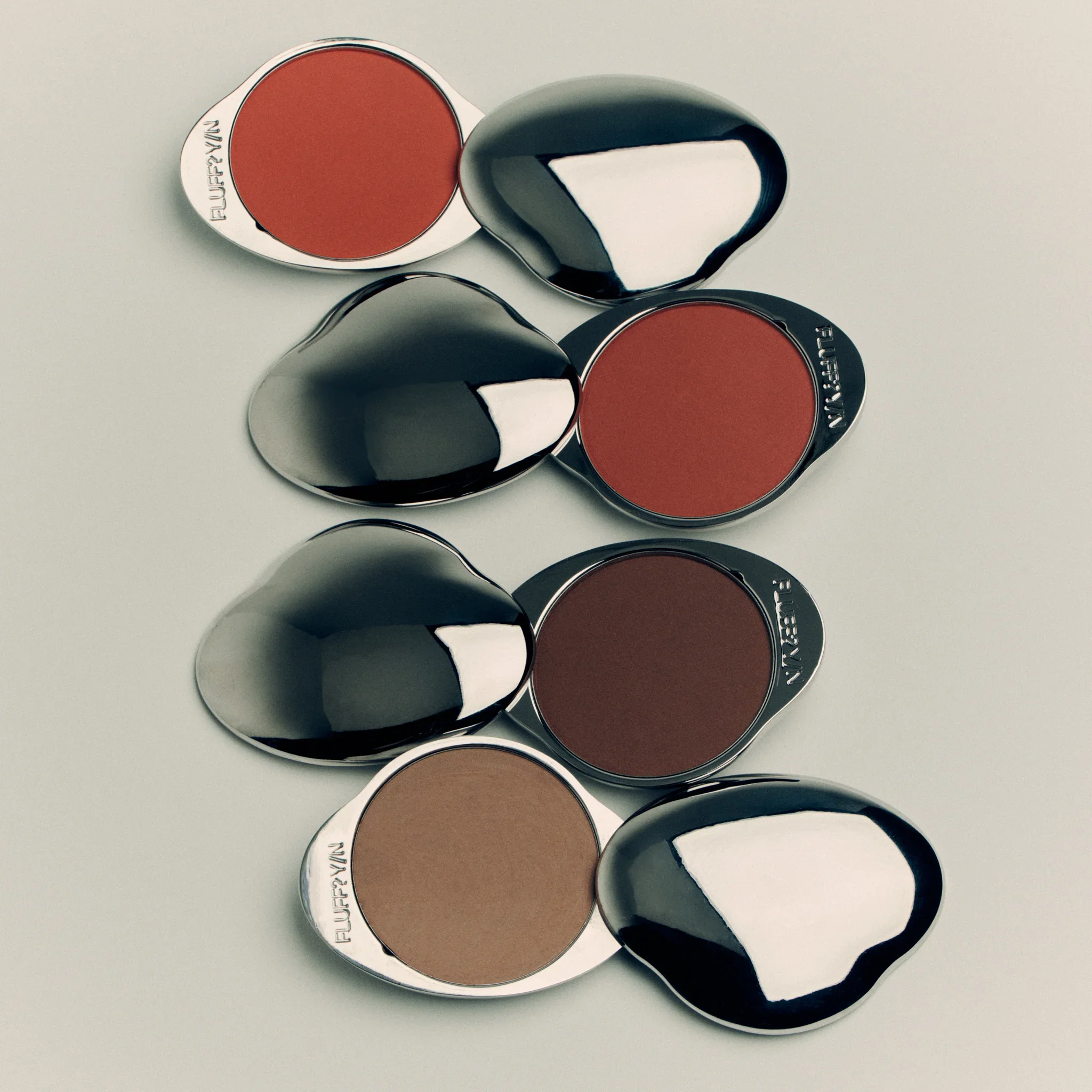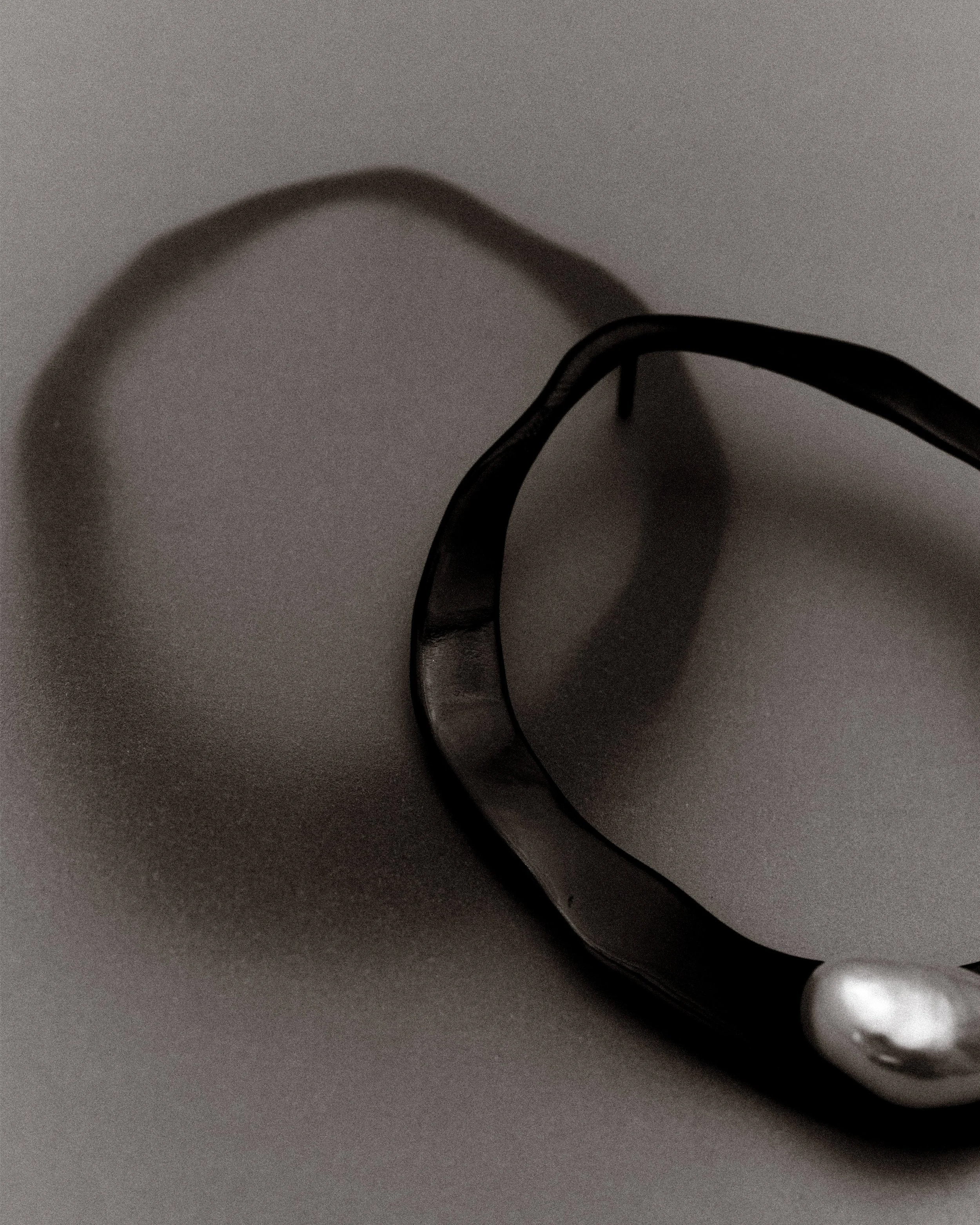Nia Thomas
Designer Nia Thomas channels sensory inspiration, sustainability, and global craftsmanship into timeless, intentional pieces that reflect her evolving design philosophy.
Launched in 2018, Nia Thomas redefines luxury fashion with a bold commitment to break barriers and create space for diverse voices within the industry. Nia’s work transcends fashion, offering a new standard for luxury rooted in both innovation and heritage.
Interview EMILY PETRUCCIONE
Images courtesy of NIA THOMAS
CREATIVE VISION & DESIGN PROCESS
Can you take us back to the beginning—what inspired you to start your namesake brand, and what were you craving that you couldn’t find elsewhere? Was there a pivotal moment when you knew this brand needed to exist?
My decision to start my fashion brand was prompted by the overwhelming positive responses I received after showcasing my senior thesis collection at FIT. Following the release of my collection, I received numerous inquiries from stylists and customers through Instagram DMs, expressing interest in my designs. Recognizing that there was a gap in the market and a lack of sustainable, thought-provoking clothes, I sought to create change by injecting my unique point of view with my captivating designs, and I officially launched my brand in the fall of 2018.
Observing the prevailing trend of sustainable brands producing conventional pieces, I felt compelled to challenge the norm and introduce designs that were not only environmentally responsible but also vibrant and engaging.
During a transformative trip to Morocco, I was captivated by the breathtaking textiles handwoven by local artisans, which ignited my desire to collaborate with skilled craftsmen and women who specialize in unique techniques—opening up a world of possibilities for my brand.
Your collections often begin with sensory experiences—like the feel of cashmere or the scent of organic indigo. Can you walk us through how a single sensation evolves into a full-fledged design?
For me, it always begins with a feeling—something visceral. That spark when you run your hands over a new textile or catch an unexpected scent that instantly grounds you. It’s a sort of beautiful chaos—sensory overload in the best way.
For our Resort 2026 collection, that spark came from a bundle of raffia I found tucked in the corner of a gift shop—forgotten, dusty, and wildly inspiring. It had this rare turquoise hue that I couldn’t stop thinking about. Then, as if by fate, I realized it was an exact match for a cotton yarn I’d found months earlier, which I had held onto without knowing why. Suddenly, the whole vision clicked into place. I sketched a strapless gown that same day, and—shockingly—the first sample came out perfectly. That almost never happens. Usually, we need two or three rounds. But this one was meant to be. It’s now the centerpiece of the new collection.
Nature plays a significant role in your inspiration, from the hues of sunsets to the textures of seashells. How do you translate those elements into wearable pieces?
Nature is the ultimate artist. I’m drawn to it for its honesty—it doesn’t try to be perfect, which makes it all the more perfect. Translating that into fashion feels like a creative puzzle: how do you take something that was never meant to be worn and make it functional, beautiful, and comfortable?
Sometimes that’s literal, like with our Tuti skirt—a turquoise silk piece adorned with bold blue seashells that mirror the silk’s sheen and movement. It’s about allowing the natural textures and forms to become part of the garment’s architecture, not just an accessory.
“Nature is the ultimate artist. I’m drawn to it for its honesty—it doesn’t try to be perfect, which makes it all the more perfect.”
You’ve incorporated unexpected materials—like lilac leather and silk ribbons from an office supply sale in Mexico City. How do you decide which unconventional elements to integrate into your designs?
I like to think of my brand as a living, breathing thing—constantly evolving. That’s actually why my logo is my name in a spiral. Each collection reflects a question I’m asking myself—or that others are asking me. One of the big ones recently has been: “What sets Nia Thomas apart?”
Crochet and handknits have had a big moment in fashion, and I wanted to push that further—to play with materials that aren’t traditionally used in those spaces. So when I came across lilac leather or stumbled upon silk ribbons in a closing sale, I saw opportunity, not limitation. These aren’t just aesthetic choices—they’re exercises in growth. Both creatively and personally. It’s a major plus that our customers are resonating with these new textiles as well.
SUSTAINABILITY & ETHICAL PRACTICES
Sustainability is central to your brand, from natural fibers to plant-based dyes. How do you balance aesthetic appeal with environmental responsibility?
Honestly? It’s not easy. I joke that I’d probably be a millionaire by now if I made fast fashion in neon plastic. But that’s not the legacy I want. I believe in proving that sustainability doesn’t have to mean sacrificing joy or creativity. It’s not all beige basics and linen sacks—though we love a good neutral! It can be bold, colorful, textured, and shape-driven too. The goal is to create pieces that feel both exciting and ethical.
Collaborating with female artisans in Mexico and Peru is a cornerstone of your work. How have these partnerships shaped your design process?
The artisans I work with are not just collaborators—they’re the heartbeat of this brand. Without them, there would be no Nia Thomas. They ground me creatively and technically. I sometimes dream up pieces that are wildly impractical to make—and instead of saying no, they say, “Let’s try it this way.” That collaboration often leads to designs that are not only more functional but more beautiful than what I imagined. And the “happy accidents”? They tend to become our bestsellers. It’s a reminder that creativity thrives with trust and shared vision.
You’ve shared your commitment to creating garments that can one day return to the earth. How does that guide your material choices?
Visiting a landfill changed me. Seeing that mountain of waste—some of it still intact decades later—was unforgettable. I left knowing I didn’t want to be part of that problem. That’s why we’ve always prioritized biodegradable materials—starting with cotton, which naturally breaks down within months. Even our hang tags and brand labels are made from recycled, compostable materials that cost two or three times more than plastic ones.
It’s also why we reuse leftover fabrics for things like our dust bags, and swap textiles with fellow designers rather than letting materials go to waste. Every small decision is part of a much bigger commitment.
How have you approached scaling your brand while staying rooted in ethical production? Any non-negotiables?
Scaling while staying true to your values? That’s the real fight. There have been plenty of tempting offers—some very lucrative—but if they don’t align with my ethics, I walk away. Fast fashion collabs, for example, aren’t on the table. The short-term gain isn’t worth compromising what I’ve built.
I’ve made plenty of mistakes—missed customs forms, overproduced styles, shipping delays you wouldn’t believe. But I’ve learned. I still source all my own materials, flying from LA to Japan to Europe to find the right fabrics. Eventually, I’ll have to let go of some of that, but for now, it’s how I ensure both integrity and magic in every piece.
CULTURAL INFLUENCE & PERSONAL JOURNEY
Relocating to Mexico City has been pivotal. How has it influenced your creativity and business mindset?
Living between New York and Mexico City has been a beautiful contradiction. New York taught me hustle—go, go, go. But Mexico City taught me to pause. There’s no 24/7 culture there, and that’s been healing. I’m definitely still a workaholic, but I’ve learned to create boundaries—turning my phone on airplane mode, honoring downtime.
That said, creativity doesn’t clock out. Some of my best ideas hit me mid-yoga class or at weekend brunch with friends. So I try to stay open while still protecting my peace. In this industry, people love to make their urgency your emergency. I’ve learned to politely say no if I don’t have the bandwidth and keep it moving.
“Timelessness is about feeling, not fashion cycles. I design with longevity in mind—emotionally and materially.”
Your time in Oaxaca and your artisan collaborations have left a mark on your work. Can you share a meaningful moment from that experience?
Oaxaca is pure magic. The colors, the culture, the food, the reverence for tradition—it’s endlessly inspiring. One of the most powerful experiences was working with a natural dye artist named Elsa. Together we created one-of-a-kind pinks from cochineal, but each batch varied. That unpredictability, that surrender to the process, was humbling.
It taught me that not everything has to be controlled or duplicated perfectly. Sometimes, nature gives you a slightly different version—and it’s even better than what you planned. And my customers are drawn to the perfectly imperfect and always our attention to detail.
Balancing life between New York and Mexico City gives you access to very different creative environments. How do those contrasts influence your designs?
Our signature crochet really took off in the beachwear space, which was amazing—but also limiting. Not everyone is living their best life in Tulum year-round. My core customer? She’s often a New Yorker who needs cozy knits and formal dresses for events, not just bikinis.
So we pivoted. We introduced cold-weather sweaters, silk gowns, elevated basics. The Nia Thomas woman is well-traveled, stylish, and always evolving—so the brand has to reflect that same spirit of duality and movement.
ENTREPRENEURSHIP & INDUSTRY INSIGHTS
How has being a Black female entrepreneur shaped your path in fashion?
It’s shaped everything—but not always in the way people assume. I don’t wake up each morning thinking, “Time to be a role model!” But over the years, women—especially Black women—have reached out to say that seeing me do this has inspired them. That means everything to me.
At the end of the day, I’m just doing my best—learning as I go, making mistakes, making magic. I want to be remembered not just as a Black designer, but as someone who was kind, innovative, and deeply committed to her craft.
“I want to be remembered not just as a Black designer, but as someone who was kind, innovative, and deeply committed to her craft.”
Participating in the Black in Fashion Council Discovery Showroom elevated your visibility. How did that platform impact your growth?
It was a game changer. In one week, I met editors, stylists, buyers, and creatives that would’ve taken me years—maybe decades—to access. Sandrine and Lindsay created a space where emerging Black designers could be seen and taken seriously. That visibility? It’s priceless. And it helped catapult the brand into conversations and opportunities that we’re still benefiting from today.
How do you balance the creative side of your work with the business side as your brand grows?
The cringe truth is I schedule it—like a doctor’s appointment. Thursdays and Saturdays are sacred design days. I block them off, put my phone on Do Not Disturb, and dive in. Because if I don’t make time for sketching, moodboarding, and dreaming, it gets swallowed by the logistics of running a business.
Creativity needs structure to thrive. It’s ironic, but true. And when you’re on a fashion calendar, deadlines are very real—so time management is everything.
FUTURE ASPIRATIONS & LEGACY
You’ve expressed interest in home goods. What draws you to that space, and what’s next for Nia Thomas?
It started during an art residency in Oaxaca. I hand-dyed silk pillowcases with natural pigments, and my friend Daniel captured them in the most dreamy, sun-soaked photos. When we launched them, they sold out in 48 hours. That was my “aha” moment—why stop at clothes?
I’d love to expand into bedding, curtains, rugs—pieces that make your home feel like a sanctuary. I’m just waiting for the right moment and manufacturing partners. But it’s absolutely on the vision board.
How do you ensure your designs stay timeless in a trend-driven industry?
Timelessness is about feeling, not fashion cycles. I design with longevity in mind—emotionally and materially. I imagine someone stumbling across a Nia Thomas piece in a vintage shop decades from now, and falling in love with it all over again.
I want people to keep these pieces, wear them, gift them, pass them down. That’s when fashion becomes legacy.
What does legacy mean to you?
Legacy is about courage. About taking risks and having fun—and helping others feel more themselves while doing it. I want to be remembered for uplifting craftsmanship, especially from communities that are often overlooked, and for creating beauty that respects both people and the planet.
If someone says, “That dress made me feel amazing—and it was made with intention,” then I’ve done my job.
From basics produced locally in NYC to their handcrafted knitwear in Mexico and Peru, every Nia Thomas piece is born from collaboration with skilled artisans. They prioritize ethical production by working with female-led factories and using time-honored techniques, while minimizing their carbon footprint and supporting the local economies of the communities they partner with.
Images courtesy of Nia Thomas
YOU MIGHT ALSO LIKE



















As many companies quietly scale back their sustainability efforts, Swedish brand Houdini Sportswear is proving that impact-led business models still outperform.